Breaking Travel News investigates: The Crusaders history of Israel
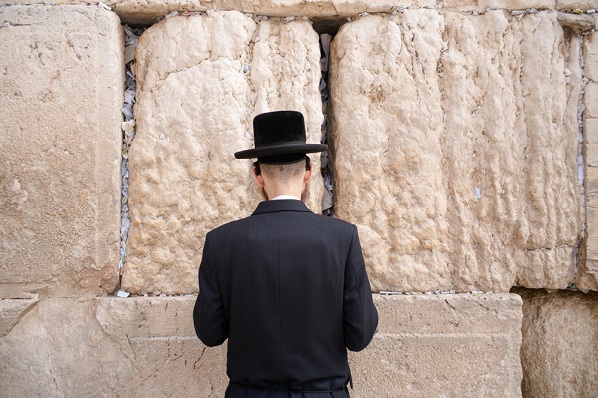
It was shortly before our return to Ben Gurion Airport in Tel-Aviv on the last day of our trip that we stopped into an exquisite 11th century crusader church in the Arab town of Abu-Gosh.
There, one of the Benedictine monks, French-born Brother Olivia recounted a story of recently singing with Jews, Muslims and other Christians in Arabic.
He described Israel as “the country of paradoxes”.
Arguably no other small strip of land in the world had played such a huge role in the human story over the past 2,000 years.
Its current struggles are a microcosm of some of the challenges the world at large faces.
It was for these reasons I jumped at the chance to visit Israel, the tourist board having invited us to explore the history of the destination, and in particular The Crusaders.
The tour planner and our guide, Moishi, seemed to have no interest in showing us Tel-Aviv, I can only guess because a large percentage of tourist money already stays in the de facto capital.
Instead he was keen to highlight other areas of the country, including the small coastal town of Narhiyria, located right in the north of the country on the border with Lebanon.
On our way there it’s impossible not to notice the huge infrastructure projects that stretch the length and breadth of the country.
Telephone pylons upon telephone pylons accompany brand new looking four-lane motorways.
Agriculture fills in the gaps between towns as we make our way north.
We pass a shiny, glass technology park on the outskirts of Haifa and we hear about some of the cutting-edge innovations that emerge from those buildings.
We see a little of Narhiyria, and I would hope that The Carlton Hotel isn’t the best it has to offer.
Functional but unloved, you get the feeling its last make over was pre-millennial, perhaps reflecting the malaise which has swept tourism in this part of the country following the recent political upheavals.
The town feels like an overgrown fishing village which is exactly what it is.
The window-less hotel restaurant has little appeal for dinner so we head to the nearby Sagar.

Sunrise over the sea of Galilee in Israel
Acre
Next day we have a few minutes to kill in the morning, so we walk the ten minutes to the sea.
Quiet at the this time of the morning in late February, the proliferation of fast food and ice cream shacks suggest that this is a bustling resort in the summer months.
I can only guess that the ‘Danger, do not swim signs’ are not permanent.
Mediterranean-facing Acre itself is more impressive and well worth a visit.
Hugely important as a crusader port, the main buildings were built by The Hospitallers at great expense in the 12th century but were buried in later centuries by the Mumluks, the fortifications being too strong to be destroyed.
While walking around the cavernous chambers you can get a feel for the period and the fact that much of area is still to be excavated adds to the sense that you’re genuinely exploring.
We pick up freshly made falafel for lunch in the old town and view Haifa from across the bay.

Not surprisingly, security can be a concern in Israel
Safed
Next we make our way inland to Safed, and I begin to realise how small this country is.
Even for somebody from UK, Israel is tiny.
On the way we stop at Yehiam, a crusader castle which overlooks virtually the entire northern extremity of the country.
Apart from the guy in the box office at the foot of the castle taking the admission fee, it’s completely deserted.
This, along with the incomplete excavations, again adds to the sensation of being able to feel the past.
It’s either that or the fact that in a country with such a rich history the past is everywhere.
You can make your way up the watch tower and take in the view from Lebanon to Haifa and beyond.
The view from the high point of Safed is no less impressive but this time the view looks south across the Sea of Galilee.
Safed, like the rest of Israel, is not short of history both ancient and contemporary.
We make our way down to the Leonardo Hotel in Tiberius, our base for the next two days.
Again, the hotel could be considered a little dated in decor but all is forgiven for the stunning view across the Sea of Galilee.
The sunrise was worth setting my alarm for and a highlight of the visit.
It’s perhaps worth noting that breakfast and meals in general can suffer a bit on Saturdays because of the Shabbat.
Coffee and bread is brewed/baked the day before so freshness can suffer.
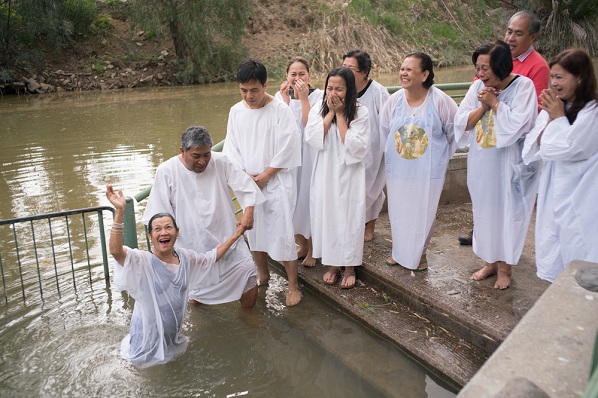
Spiritual salvation in the River Jordan
Yardenit
We visit the nearby River Jordan baptismal site, Yardenit, a busy port of call for the modern day pilgrim which offers a fascinating insight for the non-believer in the religion racket.
The Israeli government have provided excellent facilities for Christians from all around the world to get dunked in the slightly murky waters of the river and they make sure you exit through the gift shop.
Suspiciously clean water from the river is available to buy and so are empty bottles that you can fill yourself.
Back on the crusader trail we climb the western incline of the Jordan Valley for the castle of Belvoir.
Like Yehiam Castle, the whole site feels nearly deserted allowing the visitor the chance to contemplate the lives of the people who built and lived there 1,000 years ago.
The castle observes a huge part of the Jordan Valley and is not to be missed.
It exemplifies this element of what Israel has to offer.
We also stop by a natural spring where young Bedouin lads are watering their horses and smoking shisha while playing with their mobile phones.
A scene not unfamiliar in any British town with souped-up Volkswagens replacing the horses.
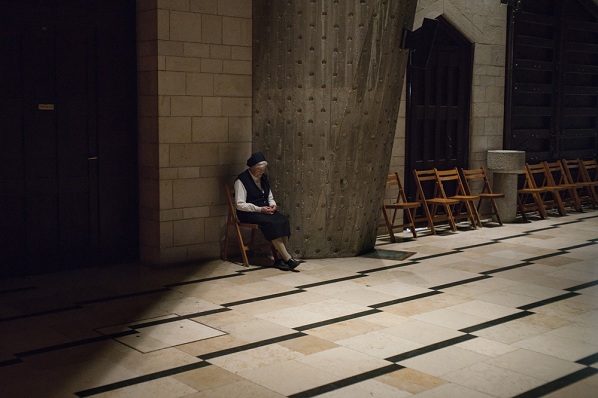
Quiet contemplation
Nazareth
Our guide doesn’t seem too keen to take us Nazareth, perhaps because it’s unrelated to the crusades, or it’s a largely Arab town or maybe because the traffic and parking are somewhat tricky.
In any case, we go and enjoy the best falafel of the entire trip.
Nazareth has quite an exciting buzz about it and feels far removed from the more Western-facing Jewish towns.
The main draw is the impressive Catholic Church of the Annunciation built in the 1960’s over the ancient home of the Virgin Mary.
The new building draws influence from many elements of the region’s past and it’s refreshing to see some excellent 20th century architecture in a town so heavily linked with the biblical era.
Cutting back west, we visit Caesarea, about half-way between Tel-Aviv and Haifa.
Built by the Romans this site is a world away from the deserted castles of Belvoir and Yehiam.
Huge investment makes Caesarea an attractive proposition for visiting families, with play areas, food outlets and interactive films explaining the fascinating history of the port.
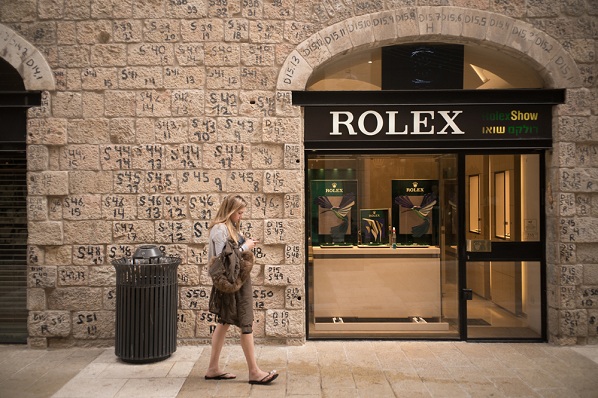
A more modern Israel in Jerusalem
Jerusalem
Onwards to Jerusalem to stay at the target="_blank">Prima Kings Hotel, with a balcony overlooking Tsarfat Square a short walk from the old city.
Again the sunrise is something to get up early for.
The slick shopping area immediately around the old city is full brands like Rolex and American Eagle and for some reason comes as surprise when heading into the worlds holiest square kilometre.
The old city undoubtedly has a special atmosphere, with the area having crucial significance to Jews, Muslims and Christians alike.
Once again, the main draws feel pretty well managed and you have a sense of freedom to explore, you can take in the Stations of the Cross (the original religion-tour set up by the crusaders) relatively unhindered.
For some people the experience of being in the Church of the Holy Sepulchre is a life-long dream realised and that sense of excitement is palpable.
Throughout the old town there is the mild whiff of uneasy tension and security is quite tight when entering a Jewish quarter; the ‘bomb-bins’ are testament to this.
However the Western Wall also feels very accessible and even as a non-believer it’s impossible to not want to take a free kippa and place your hands on this site of years of intense prayer and devotion.
Not surprisingly there was no revelation for me.
Our penultimate stop is at the Ramat Rachel Hotel on the outskirts of Jerusalem overlooking Bethlehem.
This Kibbutz is now a fully functioning resort with some of the best rooms I saw in Israel.
The atmosphere is relaxed and this would make an excellent base to explore this part of the country.
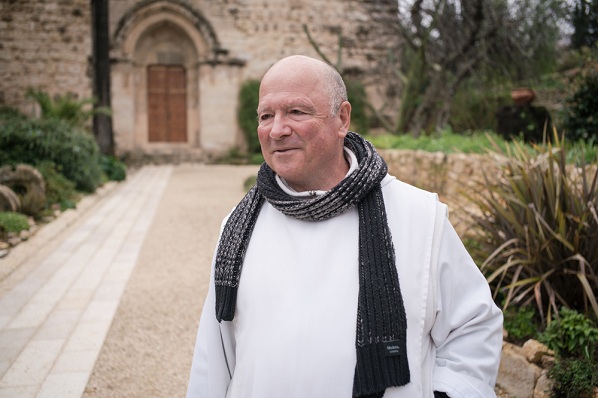
Preaching peace with Brother Olivia
So it’s on our way back to the airport that we meet the monk Brother Olivia at the monastery in Abu-Gosh.
It seems a fitting final stop.
The beautiful land of Israel is undoubtedly troubled but I ultimately left with a sense of awe and optimism.
It’s easy when sat in a cosy flat in East London to make binary judgments about a countries but I was reminded of the importance of exploring for myself.
Go to Israel and ask difficult questions, and don’t be afraid of debate because the people you meet in Israel will be happy to give you their side of the story.
More Information
For more information on visiting Israel head over to the official website.
All images courtesy Phil Sharp

